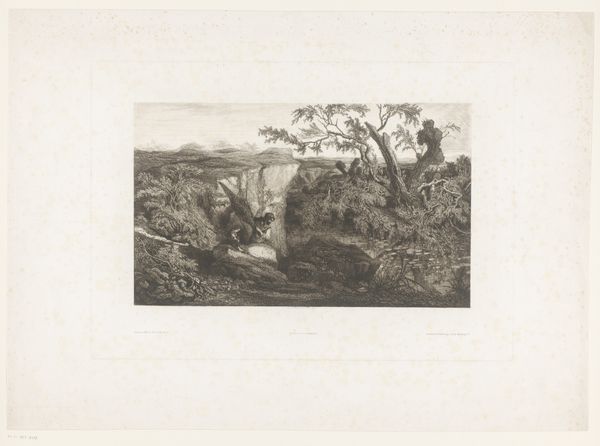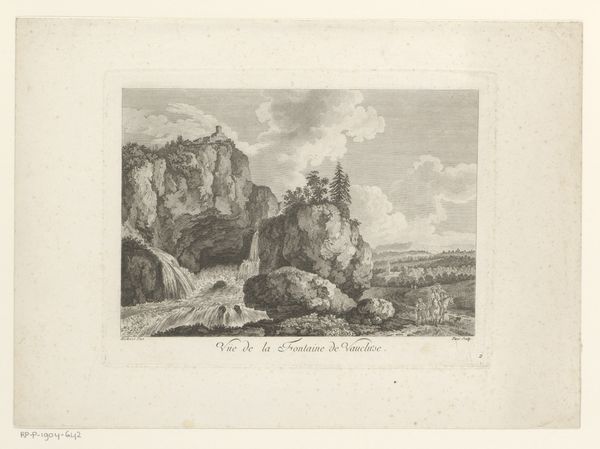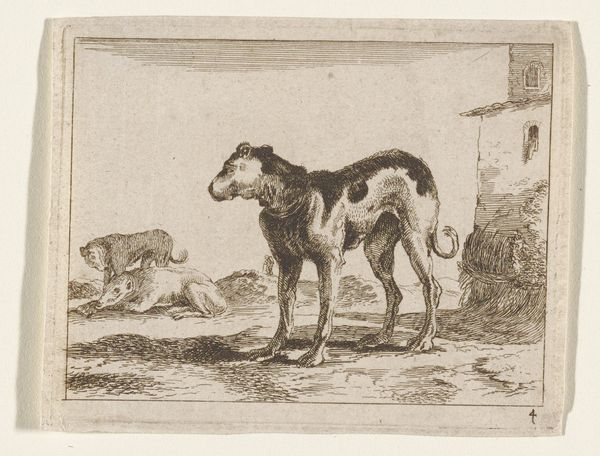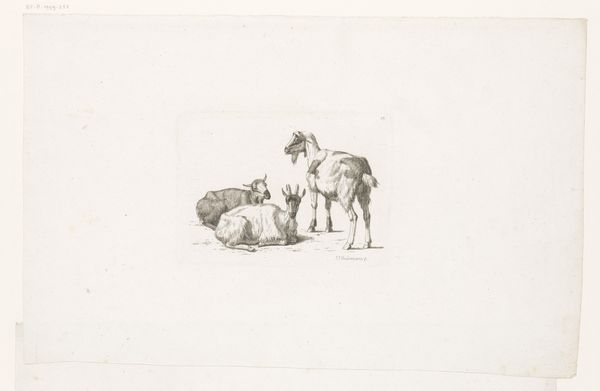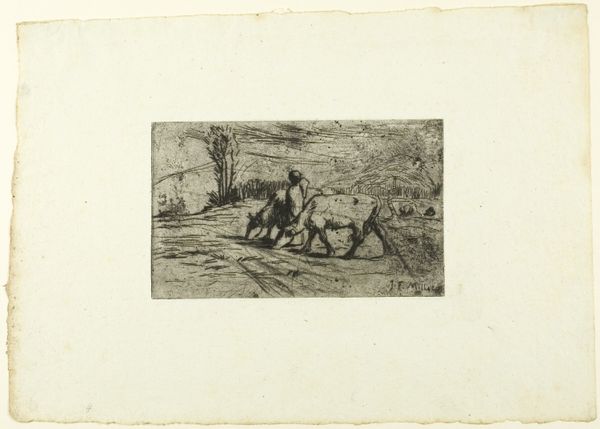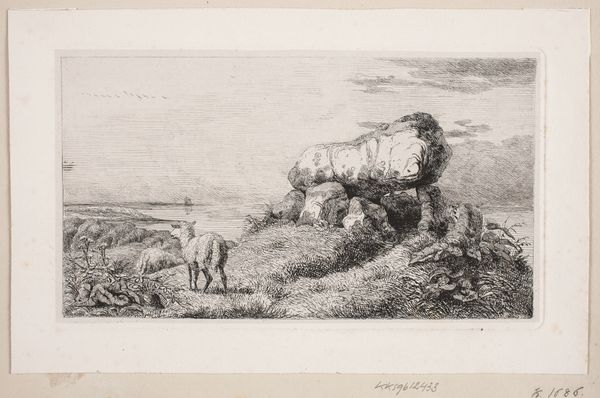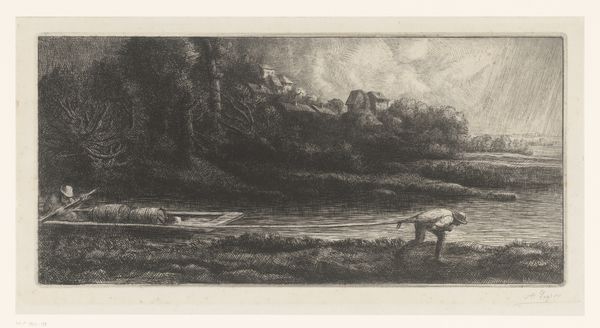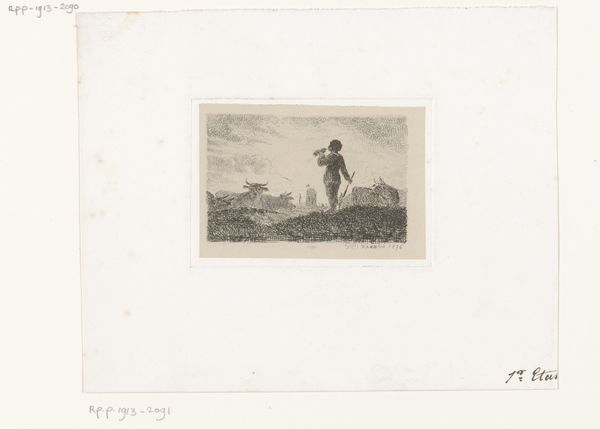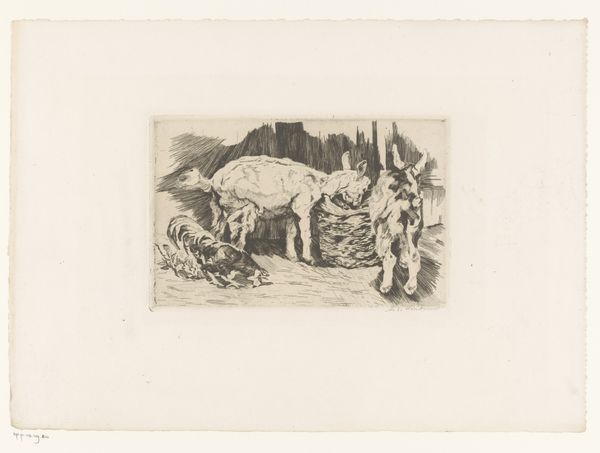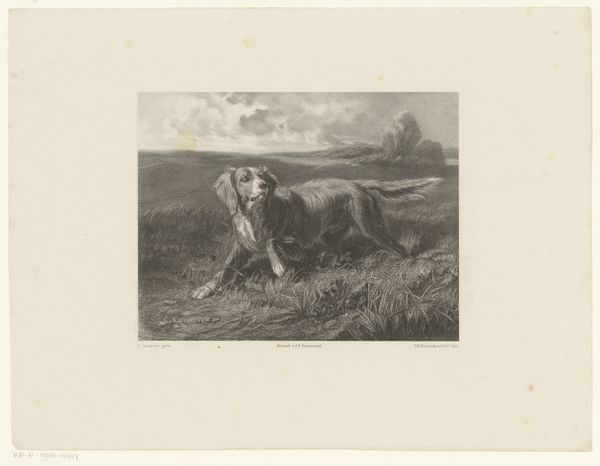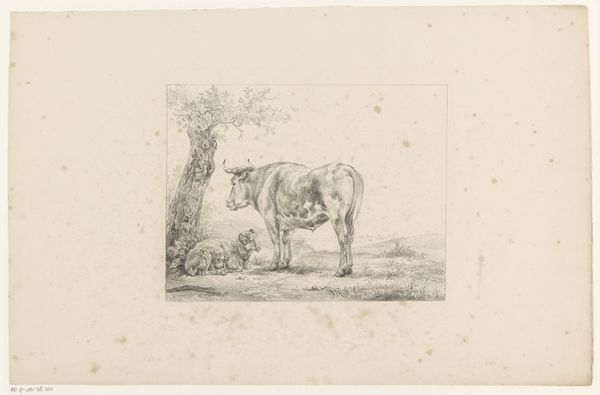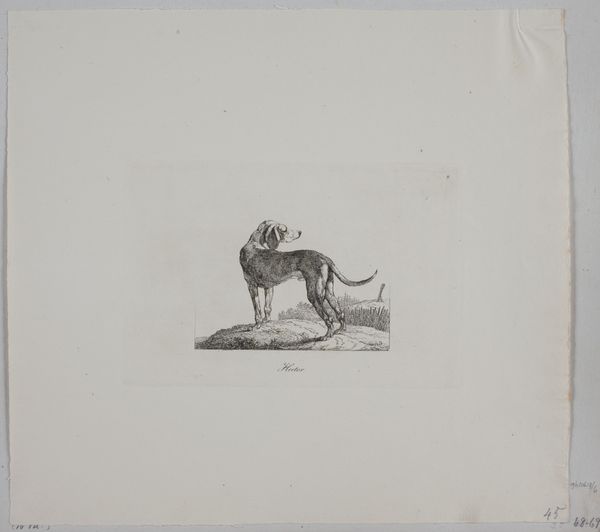
print, engraving
#
pencil drawn
# print
#
dog
#
old engraving style
#
landscape
#
personal sketchbook
#
romanticism
#
engraving
#
realism
Dimensions: height 206 mm, width 249 mm
Copyright: Rijks Museum: Open Domain
Curator: Immediately, I notice the tonal range—a delicate interplay of light and shadow that lends a melancholic atmosphere. Editor: Indeed. The piece is titled "Dog Washed Ashore on the Beach After Shipwreck," attributed to Jean Louis Demarne, created sometime between 1762 and 1829. It's an engraving. The line work appears quite intricate. I'm particularly interested in its status as a print. It suggests an interesting story about labor, consumption and the mediation of original sketches in relation to a wider audience. Curator: Observe how the artist uses the precise medium of engraving to convey both the texture of the dog's fur and the turbulent sea. The contrasting visual rhythms—the jagged, broken lines depicting the shipwreck versus the softer, more fluid lines of the waves—really guide the eye. The dog is definitely the focal point in this piece. Editor: The context surrounding the making of engravings at this time fascinates me—who produced them, who bought them, and what stories did these images tell about the human relationship with nature and disaster. I think we should not dismiss Demarne’s practice as merely replicating; through these engravings the studio production plays a vital role in both disseminating information, and also constructing particular class and social viewpoints. Curator: Semiotically, the dog itself functions as a powerful signifier of loyalty and loss. It evokes a whole world of narratives about man and beast, survival and desolation. Its raised head and bark pose questions to the emptiness above and invite a wider allegorical reading of abandonment. Editor: I wonder about Demarne's access to resources to complete these prints? What was his financial reality when rendering them? Did that then inform his understanding of what should be seen? We are, of course, only projecting outwards here, which always falls short in terms of certainty, but, it starts important critical conversations. Curator: Well, regardless of our projections, the artist undeniably manipulated formal elements to create a profoundly affecting image that draws on the rich tapestry of romantic landscape art. Editor: For me, that’s where the charm of this print lies: its connection to a broader economy of images, one that involved multiple actors whose material conditions impacted how these narratives reached audiences.
Comments
No comments
Be the first to comment and join the conversation on the ultimate creative platform.
